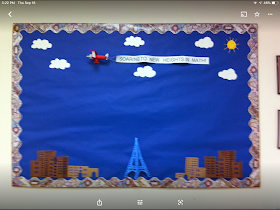Pentominoes are five squares that are arranged in various ways. After putting up the banner saying "Pentominoes are five perfect squares", I fretted that the students would think pentominoes were perfect squares. I was just trying to be cute with the wording. So, I decided to put up a disclaimer on the bulletin board. This is what I wrote.
*Disclaimer I was just trying to be cute with the
wording of the bulletin board. I got you to look though!
Pentominoes are a shape made by joining five squares together side-to-side. There are 12 of them.
A pentomino is not really a perfect square in the
mathematical world. Yes, squares are
perfect in the sense that they have equal side lengths and four right angles. However,
perfect squares are numbers that are created when you take a whole number times
itself. For example, 1 x 1 = 1, 2 x 2 =
4, 3 x 3 = 9, 4 x 4 = 16. So, the
following numbers are perfect squares… 1, 4, 9, 16, 25, 36, 49, 64, 81, 100,
121, 144, 169, 196, 225, 256, 289, 324, 361, 400...
Here, the number 4 is squared and the result is 16 squares.
Here is the . Studio file if you would like to cut out some Pentominoes with your Cameo Silhouette.













